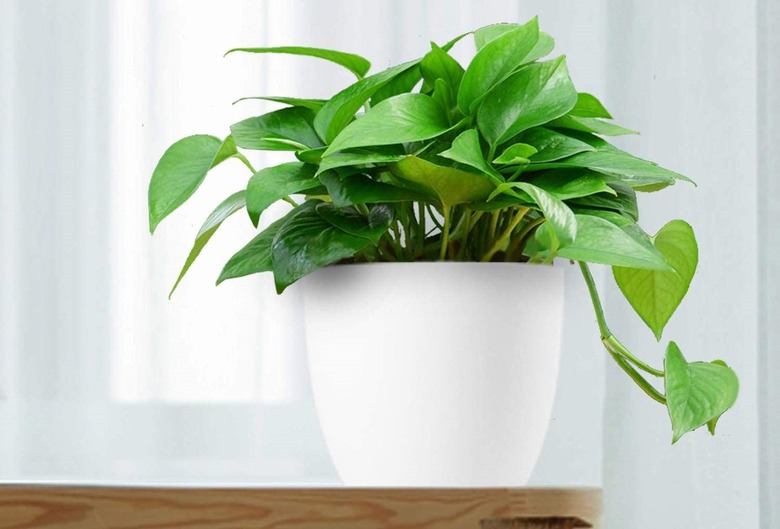How To Punch Drainage Holes In Plastic Flower Pots
We may receive a commission on purchases made from links.
Gardeners have a wealth of choices when it comes to plastic flower pots. They come in a wide range of sizes, shapes, and colors, and best of all, they won't break the bank. Plastic plant pots with drainage holes are easy to locate, but some might not have the drain holes punched out. With such pots, you'll need to install drain holes before using them, and fortunately, you don't have to be a master craftsman to get the job done.
Importance of Proper Drainage
Importance of Proper Drainage
Whether you want to add greenery to a patio or to spaces indoors, containers will make your design dreams come true. Trees, fruits, veggies, flowering annuals, and perennials all grow well in pots. However, the pots need to drain properly to keep your plants producing healthy, problem-free growth.
Using plastic pots with drainage holes allows excess water to seep from the container rather than remaining contained in the soil, making it too soggy. Soggy soil doesn't allow proper air to reach the plant's root system, and this leads to problems, like root rot and potential plant death. Once root rot sets in, it's usually impossible to save the plant and bring it back to good health. Unless you are growing plants that prefer boggy, wet conditions, making sure your containers drain properly is essential.
It's also a myth that adding gravel to the bottom of your pot assists in drainage. Adding gravel to the bottom of your flower pot is actually detrimental and leads to root rot and a dead plant. The water stops draining once it hits the gravel and remains in the bottom layer of the soil. This leads to constant soggy conditions, and this negatively affects the roots and the plant's health. If you're worried about the soil coming out of the drain holes, place a coffee filter over them, which keeps the soil contained but allows the water to drain.
Punching Holes With a Nail
Punching Holes With a Nail
If you don't have a drill or don't feel comfortable using one, you can always use a nail to add drainage holes to your plastic flower pot. This process works well if the plastic pot has the drain hole locations already marked on its bottom but isn't punched open. If you look at the bottom of the pot, you may see small, circular areas evenly spaced where the drain holes should be. These are the areas you should punch out with a nail.
You'll want to use a large nail and hammer to punch out an opening, and if you think you might hammer your hands, you might want to wear a pair of gloves. Place your plastic pot on a stable and level surface upside down. Situate the nail over the circular area for the drain hole and hit it with the hammer. It should open relatively easily. Make sure to remove the piece of plastic so it doesn't accidentally close the hole when you fill your pot with soil. Usually, you can pull off the piece with your hands.
Punching Holes With a Drill
Punching Holes With a Drill
Whether your plastic flower pots with drainage holes need a few additional ones or the pot doesn't have any at all, you can easily punch holes in the pot using a drill. Before you start drilling away, make sure to wear safety gear, like protective eyewear, and do all your work on a flat, stable surface. You can use a regular hand drill, and if you are punching drain holes in smaller 4-inch to 12-inch pots, use a 1/2-inch drill bit. For larger pots, use a 1-inch drill bit.
Place the flower pot upside down on a flat surface, hold it steady, and drill four to six evenly spaced drain holes in its bottom. Smaller flower pots require fewer holes than larger ones. Follow the same process if you're only adding additional holes to a plastic flower pot with drainage holes already punched in the bottom. Once you've added the drain holes, you can add soil and plant as usual.
